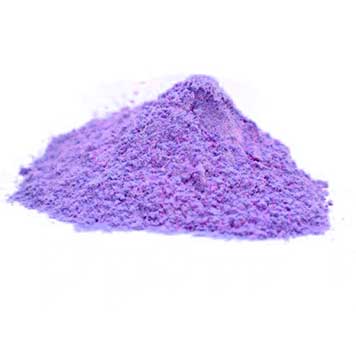
Exploring E516 Food Additive and Its Applications in Food Industry
Understanding E516 A Food Additive
In the world of food science and technology, food additives play a crucial role in enhancing the quality, safety, and shelf-life of various products. Among the myriad of food additives available, E516, also known as calcium sulfate, stands out for its diverse applications and properties. Often encountered in both commercial and home kitchens, E516 serves multiple purposes that benefit food manufacturers, suppliers, and consumers alike.
What is E516?
E516 is the European food additive number assigned to calcium sulfate, an inorganic compound that appears as a white powder or granule. This compound is known for its stability, non-toxicity, and versatility, making it a popular choice in the food industry. Calcium sulfate is found naturally in the environment, often in minerals such as gypsum, and is generally recognized as safe by food regulatory authorities when used within specified limits.
Uses of E516 in Food
One of the primary functions of E516 is as a firming agent. In foods such as tofu, calcium sulfate is often added during the manufacturing process to help retain texture and improve overall firmness. When making tofu, for instance, calcium sulfate serves as a coagulant, promoting the solidification of soy milk and resulting in a more desirable texture. This application is one of the reasons why tofu can be found in various forms, from silken to extra-firm, appealing to different culinary preferences and cooking methods.
Beyond tofu, E516 is also utilized in various food products including baked goods, dairy products, and snacks. It can act as a stabilizer in certain preparations, helping to maintain consistency during production and storage. Moreover, it can enhance the quality of flour and improve its performance in baked goods by improving dough strength and gas retention, which results in a better rise and texture in breads and pastries.
e516 food additive

Nutritional Benefits
Calcium sulfate not only serves functional roles but also contributes nutritional value to food products. Being a source of calcium, it can help fortify foods, thereby enhancing their nutritional profile. Calcium is an essential mineral crucial for various bodily functions including bone health, muscle contraction, and nerve transmission. Thus, the inclusion of E516 in food products aids in combating calcium deficiency, which is prevalent in many populations.
Safety and Regulatory Aspects
The safety of food additives, including E516, is closely examined by health and regulatory authorities worldwide. In the European Union, calcium sulfate is classified as an acceptable additive under strict guidelines. The European Food Safety Authority (EFSA) assesses the safety of food additives to ensure they pose no risk to human health when consumed as part of a normal diet. Similarly, the United States Food and Drug Administration (FDA) recognizes calcium sulfate as generally recognized as safe (GRAS) for use in food.
It is important for consumers to be aware of food additives and understand that their use is often aimed at improving food quality and safety. While some individuals may have dietary restrictions or preferences that lead them to avoid certain additives, the use of E516 in moderation is generally deemed safe within the food industry.
Conclusion
E516, or calcium sulfate, is just one of many food additives that enhance our culinary experiences and ensure the safety and quality of our food products. With its diverse applications, nutritional benefits, and regulatory backing, calcium sulfate serves as an essential component in many of the foods we enjoy daily. As consumers, understanding the roles of food additives like E516 can empower us to make informed choices, balancing our health needs with our culinary preferences. Whether you are a professional chef or a home cook, embracing the science behind food additives can enrich your cooking endeavors and deepen your appreciation for food technology.
-
Pure Sodium Dichloroisocyanurate Dihydrate | Powerful DisinfectantNewsAug.29,2025
-
Industrial Chemicals: Quality & Purity for Every IndustryNewsAug.28,2025
-
Nitrile Rubber Honoring Strict Production StandardsNewsAug.22,2025
-
Aspartame Ingredients Honoring Food Safety ValuesNewsAug.22,2025
-
Fertilizer for Balanced Plant NutritionNewsAug.22,2025
-
Cyanide Gold Processing with High Purity AdditivesNewsAug.22,2025
-
Formic Acid in Textile Dyeing ApplicationsNewsAug.22,2025
Hebei Tenger Chemical Technology Co., Ltd. focuses on the chemical industry and is committed to the export service of chemical raw materials.
-

view more DiethanolisopropanolamineIn the ever-growing field of chemical solutions, diethanolisopropanolamine (DEIPA) stands out as a versatile and important compound. Due to its unique chemical structure and properties, DEIPA is of interest to various industries including construction, personal care, and agriculture. -

view more TriisopropanolamineTriisopropanolamine (TIPA) alkanol amine substance, is a kind of alcohol amine compound with amino and alcohol hydroxyl, and because of its molecules contains both amino and hydroxyl. -

view more Tetramethyl Thiuram DisulfideTetramethyl thiuram disulfide, also known as TMTD, is a white to light-yellow powder with a distinct sulfur-like odor. It is soluble in organic solvents such as benzene, acetone, and ethyl acetate, making it highly versatile for use in different formulations. TMTD is known for its excellent vulcanization acceleration properties, which makes it a key ingredient in the production of rubber products. Additionally, it acts as an effective fungicide and bactericide, making it valuable in agricultural applications. Its high purity and stability ensure consistent performance, making it a preferred choice for manufacturers across various industries.





